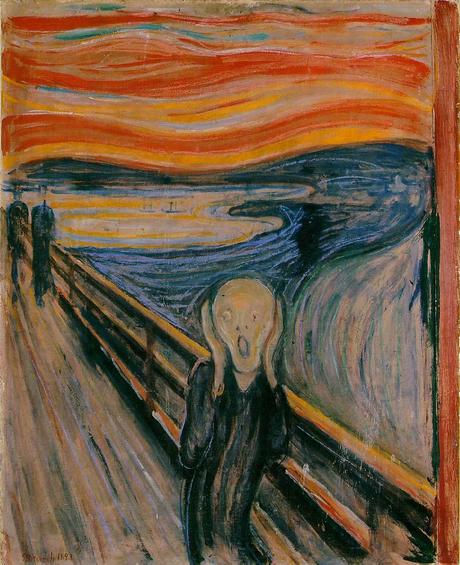At the start of my anthropology of religion course, I ask students to “explain” religion: Why do you think it exists? What do you think it does? The majority will usually give answers along existential lines: “Religion provides purpose and consolation. It gives meaning to life and relieves fear of death.”
These answers aren’t surprising given our embeddedness in a culture whose dominant form of religion claims that life and death acquire meaning only within its milieu. Aside from the obvious objection that religion can intensify the fear of death for those who worry about hell and predestination, there is another: religions focused on meaning in life and purpose in death (i.e., some kind of afterlife) are relative newcomers to the supernatural world. They are post-Neolithic.
The domestication of plants and animals had profound consequences which can be summed with a series: sedentism, surplus, specialization, stratification, slavery, and sickness. Life in agricultural societies is fundamentally different from life in foraging societies. It is only in the former that people spend inordinate amounts of time wondering about the meaning or purpose of life and death. The previously summed series can have this existential effect.
None of this is to say that foraging or nomadic lifeways don’t present their own sets of challenges, because they do. These concerns, however, typically aren’t existential. Life among kin, however harsh, doesn’t present as absurd, dislocated, or senseless. There is a reason why hunter-gatherer ethnohistories don’t record people contemplating or despairing over “the meaning of it all.” This reason has nothing to do with intellectual abilities or the progress of thought. It has everything to do with the lifeways and conditions which spawn these kinds of questions.
Having said all this, there is little doubt that such questions arose after agriculture and became acute with industrialization. For many, such as Leo Tolstoy, even the consolations of religion were not enough to quell the twin fears of meaning and mortality. In this riveting piece on Tolstoy’s masterpiece, The Death of Ivan Ilyich, Jordan Smith discusses Tolstoy’s novella and its influence:
The story’s literary merits were never in doubt, but its status as thanatology took some time to develop. It failed to register with European and American psychologists for most of the 20th century, probably because Freud’s brand of psychoanalysis emphasized dreams, sex and childhood, relegating death largely to the background.
But in 1973, cultural anthropologist Ernest Becker published The Denial of Death. In it, Becker argued that the fear of death “haunts the human animal like nothing else; it is a mainspring of human activity—activity designed largely to avoid the fatality of death, to overcome it by denying in some way that it is the final destiny of man.” Man’s subconscious fear of death and desire to transcend its inevitability leads him to create or achieve something “heroic”, so that the immortality of that creation or act might redeem the mortality of its maker. Fear of death is universal, and denial of it is equally cross-cultural.
Tolstoy’s story also imprinted on Irvin Yalom, the Stanford psychiatrist whose therapy seeks to ameliorate isolation and meaninglessness:
Yalom relies on The Death of Ivan Ilych in two important books. In Existential Psychotherapy (1980), Yalom writes, “No one has ever described the deep irrational belief in our own specialness more powerfully or poignantly than Tolstoy . . . through the lips of Ivan Ilych.” According to Yalom, humans develop a false sense of specialness as a defense against the certainty of death. “[D]eep, deep down, each of us believes, as does Ivan Ilych, that the rule of mortality applies to others but certainly not to ourselves.”
Nearly thirty years later, Yalom again turned to Tolstoy and Becker in Staring at the Sun: Overcoming the Terror of Death (2008). There he argues that death anxiety is lessened by the sense that one has lived a full, meaningful life. Ilych “is dying so badly because he has lived so badly,” he writes (emphasis in original).

It would be churlish to argue that existential angst isn’t real or that death isn’t cause for doubt. Since the Neolithic, religions (especially the Axial movements) have been grappling with meaning and mortality. This doesn’t mean, however, that humans have always been haunted by these questions or that religions originated to address them.
Post Postscript
In this piece on death and fear, Stephen Cave states: “This struggle to project ourselves into an unending future is the foundation of human achievement: the wellspring of religion, the architect of our cities and the impulse behind the arts. That religions are very much a product of our yearning for immortality is perhaps obvious.” Taking this as a universal and ahistorical given, Cave then discusses how Judaism, Christianity, Buddhism, and Islam deal with death.
This illustrates my historical point perfectly well. These Axial traditions are, in their own ways, much concerned with death and continuing life or immortality. It would be a mistake, however, to infer that these relatively modern religions speak to the evolution of supernatural beliefs or that these faiths somehow account for the origins of supernaturalism. They don’t.
The death terror and death responses are unique to certain kinds of societies and religions which grow out of these are not human universals. These religions grew from societies in which death was occurring in frequencies and ways never before seen in human history. It makes sense that they would respond to these vastly increased scales of death.

